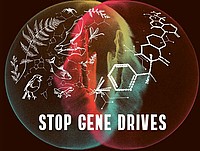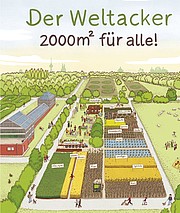24.08.2016 | permalink
Italy Places Important Restrictions on the Use of Glyphosate
August 23, 2016
FOR IMMEDIATE RELEASE:
PAN Europe enthusiastically applauds the decision by Italy’s Ministry of Health to place a number of restrictions on the use of Glyphosate, one of the world’s most ubiquitous pesticides.
The Italian restrictions ban the use of Glyphosate in areas frequented by the public or by "vulnerable groups" including children and the elderly. The list of banned areas includes parks, gardens and courtyards, the edges of roads and railways, urban areas, sports fields and recreational areas, playgrounds and green areas within the school buildings, and areas adjacent to health facilities.
In addition, the pre-harvest use of Glyphosate--a process known as desiccation--is banned. The desiccation of crops by spraying glyphosate is a primary source for residual pesticide contamination at the consumer level. Finally, the non-agricultural use of glyphosate is banned on soils composed 80% or more of sand--a measure designed to protect groundwater from contamination.
22.08.2016 | permalink
Argentina: The villagers who fear herbicides
Argentina is one of the world's largest exporters of genetically-modified soya. It's big business, but some local residents fear herbicides used by the industry could be making them sick.
Horacio Brignone lives in the village of María Juana in the Argentine flatlands, or pampas. From his window he can see fields of soya.
His 20-year old son has suffered from asthma since he was three years old, he says, but when he recently moved to a city the condition disappeared.
"He hasn't had an attack for two years since he went to study in Córdoba," says Horacio. "But when he came home for two months recently, he began to cough again."
He blames the weedkiller sprayed on the soya fields.
"We are 50m from the fields," Mr Brignone says. "We can't be certain, but respiratory problems and skin complaints are very common round here among those who live very close to the fields."
Mr Brignone's wife, Rosalía Ramonda, has suffered from rashes on her skin for years.
21.08.2016 | permalink
Millions Spent and No Vitamin A Deficiency Relieved
by Angelika Hilbeck and Hans Herren
The recent Nobel laureates’ letter accusing Greenpeace of a “crime against humanity” for opposing genetically modified (GMO) golden rice reveals a deep division not only between civil societies and some science circles but also within the science community – a division in the visions for our common future and which path to take for our joint development. A division we see growing and escalating. A strong indication of this division is that among the Nobel laureate signatories, there seems to be hardly anybody with a solid scientific track record in agriculture, food production, development, or the socio-ecological and political causes of poverty and hunger. Others with notable competence – at least in the economic and social domains of development, poverty, and hunger – are not among the signatories. Signs of escalation also include the emotional, accusing language in the letter and the ample use of scientifically unsubstantiated claims. What is missing in the letter and among the supporters and developers of GMOs is the recognition and scientific analysis of some tough facts.
16.08.2016 | permalink
Ernüchterung für Fans von leuchtenden Gentech-Pflanzen

Vor drei Jahren hatten ein paar junge Gentechniker großen Erfolg beim Spendensammeln: über 480.000 Dollar überwiesen ihnen tausende Privatpersonen. Das Versprechen: jeder Spender sollte Samen von Leucht-Pflanzen erhalten. Nun ist das Geld aufgebraucht. Die Fans warten aber noch immer auf ihre Gentechnik-Wunderpflanzen.
So berichtete MIT Technology Review im Juli, die Gentech-Firma habe bislang schon mehr als 900.000 Dollar ausgegeben, um Gänserauken (Arabidopsis thaliana) zum Leuchten zu bringen. Mit bescheidenem Erfolg – Biolumineszenz künstlich herbeizuführen und fest in einer Pflanze zu verankern erweist sich als schwieriger als gedacht. Dabei war den Crowdfundern, die über die Plattform Kickstarter gespendet hatten, der Mai 2014 als Liefertermin für ihr Gentechnik-Saatgut genannt worden.
Dennoch können weiterhin Vorab-Bestellungen aufgegeben werden. Für 40 Dollar verspricht Taxa Biotechnologies, die Firma der Gentech-Bastler, eine Packung von 50 bis 100 fruchtbaren Samenkörnern. Eine leuchtende Pflanze soll es für 100 Dollar geben. Für 150 Dollar gar eine leuchtende Rose – wobei über die Farbe noch nicht entschieden worden sei, wie Taxa auf der Webseite mitteilt. Mit der Lieferung sei „nicht vor Juni 2015“ zu rechnen, heißt es dort. Technology Review bilanziert, Gentechnik sei eben doch nicht so einfach.
Ihre Arbeit erklären die Taxa-Forscher so: „Wir designen unsere DNA-Sequenzen am Computer mittels der speziellen Biocad-Software, dann machen wir mittels DNA-Laserdruck die DNA, die wir dann mittels einer Gen-Kanone in die DNA unserer Pflanze einfügen.“ Da das eingebrachte Erbgut nicht einfach aus der Natur entnommen, sondern künstlich entworfen und erzeugt wurde, zählt das Leucht-Pflanzen-Projekt zur Domäne der Synthetischen Biologie (mehr darüber erfahren Sie in unserem Dossier). [dh]
08.08.2016 | permalink
New rules around the use of glyphosate to come into effect in two weeks
New rules which restrict the conditions around the use of glyphosate in the European Union are to come into effect in two weeks time, after the rules were published in the EU Official Journal.
Earlier this year, the European Commission granted an 18-month extension to glyphosate’s authorisation in the EU after Member States failed to reach agreement on the renewal of the herbicide.
If they had decided not to renew it, or if a decision hadn’t been reached, then Member States would have had to withdraw the authorisations for plant protection products containing glyphosate from their market.
Under the new conditions around the use of the herbicide, there is a ban of a co-formulant (POE-tallowamine) from glyphosate-based products.
06.08.2016 | permalink
Indian farmers cotton on to new seed, in blow to Monsanto
In a tiny hamlet at the heart of the cotton belt in northern India, Ramandeep Mann planted Monsanto’s (MON.N) genetically modified Bt cotton seed for over a decade, but that changed after a whitefly blight last year.
Mann’s 25-acre farm in Punjab’s Bhatinda district now boasts “desi”, or indigenous, cotton shrubs that promise good yields and pest resistance at a fraction of the cost.
Mann is not alone.
Thousands of cotton farmers across the north of India, the world’s biggest producer and second largest exporter of the fibre, have switched to the new local variety, spelling trouble for seed giant Monsanto in its most important cotton market outside the Americas.
02.08.2016 | permalink
USA: GMO Labeling Bill Has Been Signed By President Obama
The majority of our food contains GMOs.
Soon all food packages sold in the U.S. will have to have the proper labeling.
- Fortune: USA: GMO Labeling Bill Has Been Signed By President Obama
- Inquisitr: USA: Sorry Bernie, Obama Signed The GMO Labeling Law That Will Trump Vermont Law And Limit Right-To-Know
- Living Maxwell: The DARK Act 2.0 - A Punch in the Gut to the American People
- Living Maxwell: USA: Obama Signs the DARK Act, Puts Organic in Real Jeopardy
30.07.2016 | permalink
Unapproved GMO wheat found in Washington state could affect US trade
SEATTLE (AP) — Genetically modified wheat not approved for sale or commercial production in the United States has been found growing in a field in Washington state, agriculture officials said Friday, posing a possible risk to trade with countries concerned about engineered food.
The Food and Drug Administration says genetically modified organisms, or GMOs, are safe and little scientific concern exists about the safety of those on the market. But critics say not enough is known about their risks, and they want GMOs labeled so people know what's in their food.
Several Asian countries temporarily banned U.S. wheat imports after genetically modified wheat was found unexpectedly in a field on an Oregon farm in 2013. It also popped up in a field at a university research center in Montana in 2014.
25.07.2016 | permalink
EU Commission allows 'toxic soybeans' for import
Health risks of residues from spraying with herbicides not assessed
Sunday, 24 July 2016
According to news agencies, the EU Commissionhas allowed the import of genetically engineered soybeans produced by Bayer and Monsanto. The imported soybeans can be used in food and feed despite unresolved concerns about health risks. These crops can be sprayed with a combination of glyphosate and other herbicides such as dicamba or isoxaflutole. Market authorisation has been issued after massive pressure from industry, which already sold its patented seeds in the US for cultivation and now wants to import the harvest to the EU within the next months. The European Food Safety Authority EFSA only recently stated that the health risks resulting from herbicide residues cannot be properly assessed, and that safety levels cannot be defined since the relevant data are missing.
11.07.2016 | permalink
Biodiversity, GMOs, Gene Drives and the Militarized Mind
by Vandana Shiva
A recent report from the National Academy of Science of The United States, titled "Gene Drives on the Horizon: Advancing Science, Navigating Uncertainty, and Aligning Research with Public Values," warns:
“One possible goal of release of a gene-drive modified organism is to cause the extinction of the target species or a drastic reduction in its abundance.”
Gene Drives have been called "mutagenic chain reactions," and are to the biological world what chain reactions are to the nuclear world. The Guardian describes Gene Drives as the "gene bomb."



